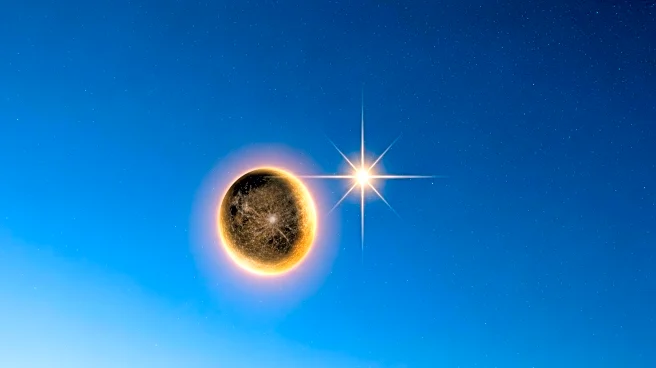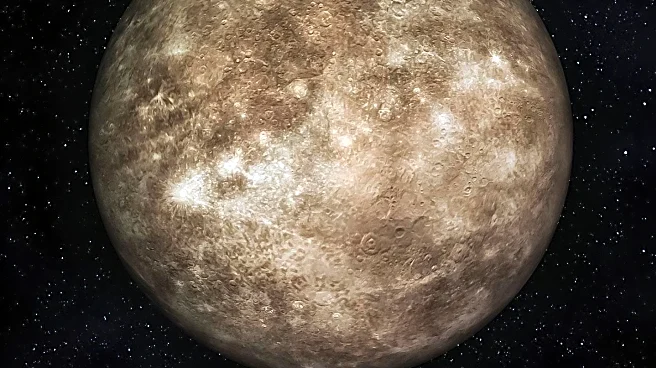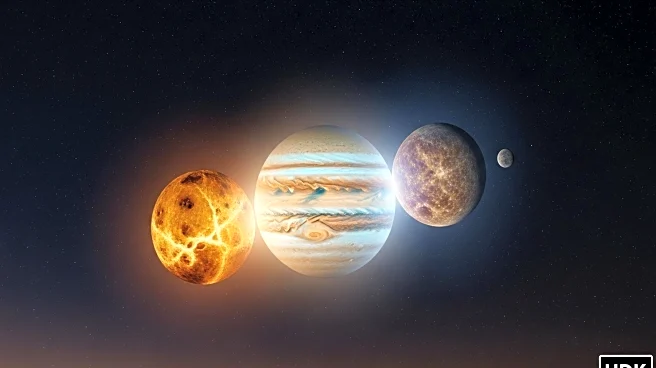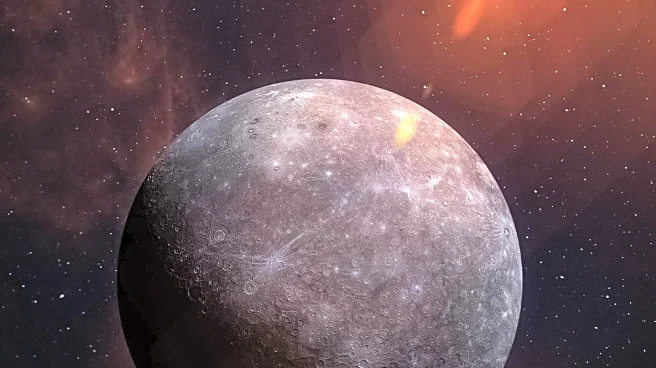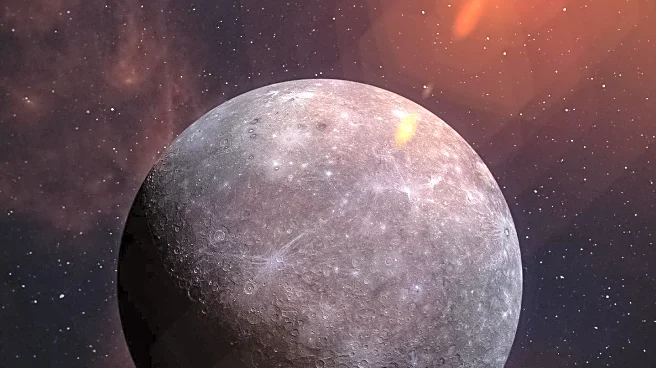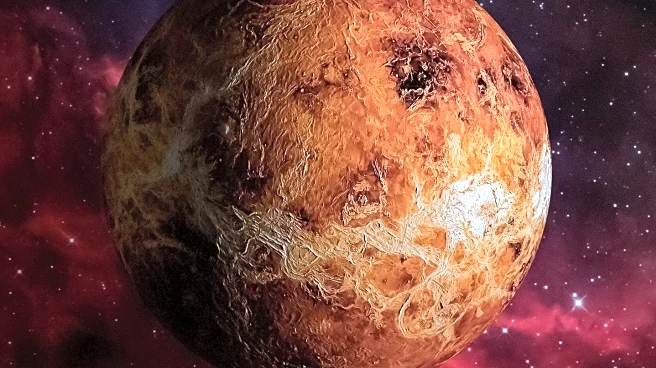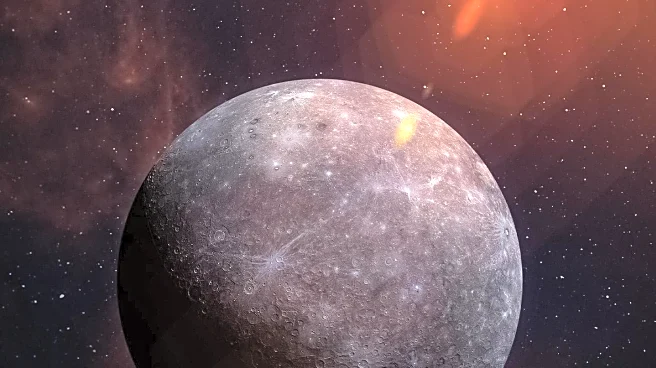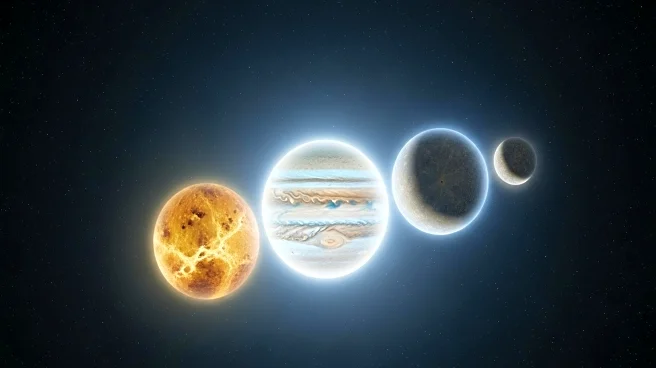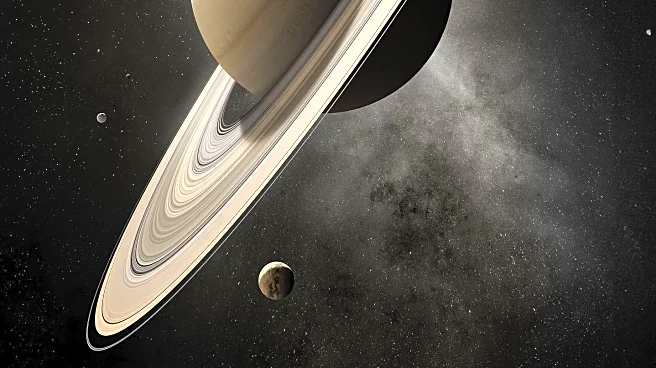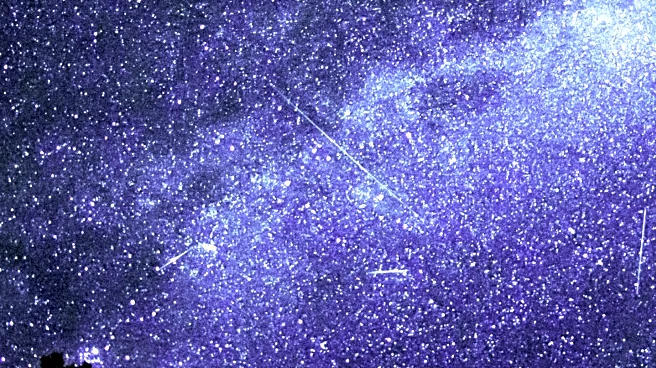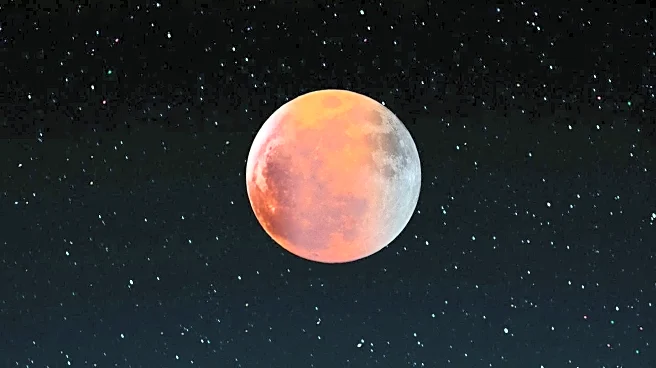What's Happening?
On September 2, Mercury will make a rare appearance alongside the bright star Regulus in the predawn sky. Stargazers are advised to find a clear view of the eastern horizon to catch a glimpse of Mercury, which will appear as a bright morning star in the constellation Leo. Regulus, known as the 'heart of the lion,' will be located less than 2 degrees to Mercury's lower right. Venus and Jupiter will also be visible, forming a diagonal line of solar system planets. Mercury's proximity to the rising sun makes it challenging to observe, and it will soon become impossible to spot as it approaches its superior solar conjunction on September 13.
Why It's Important?
This celestial event provides a unique opportunity for astronomers and enthusiasts to observe Mercury, which is typically difficult to see due to its proximity to the sun. The alignment with Regulus and other planets offers a chance to study planetary positions and movements. Such events can enhance public interest in astronomy and encourage educational activities related to stargazing. Observing Mercury's behavior as it approaches solar conjunction can also contribute to understanding its orbital dynamics and visibility patterns.
What's Next?
After its superior solar conjunction on September 13, Mercury will transition to being visible as a bright evening star, appearing low on the western horizon after sunset. Observers can look forward to this change in visibility, which will offer new opportunities for viewing and study. Astronomers may continue to track Mercury's movements and interactions with other celestial bodies, providing valuable data for ongoing research.
